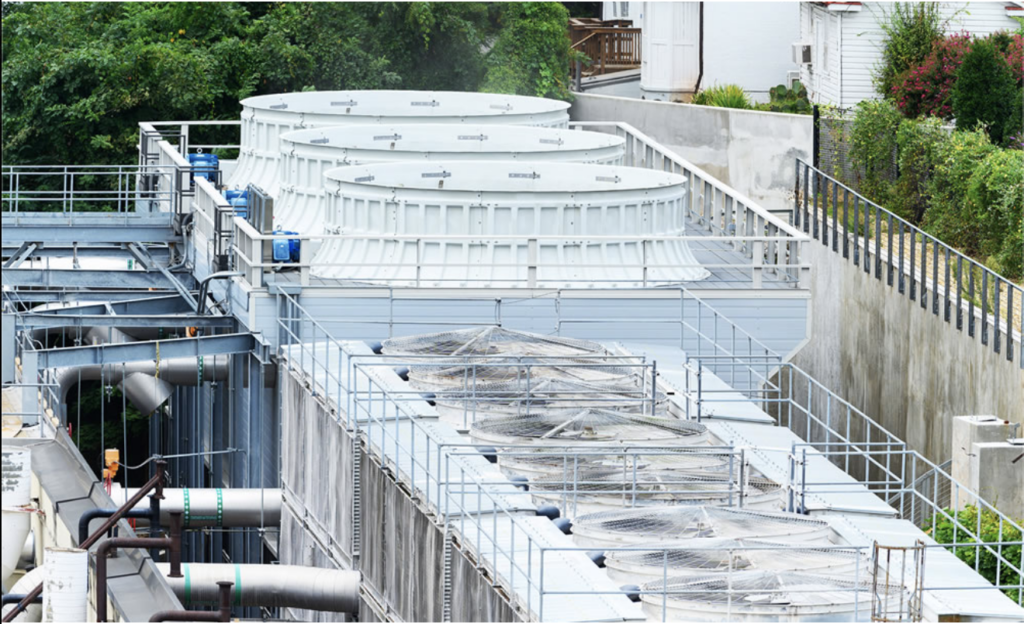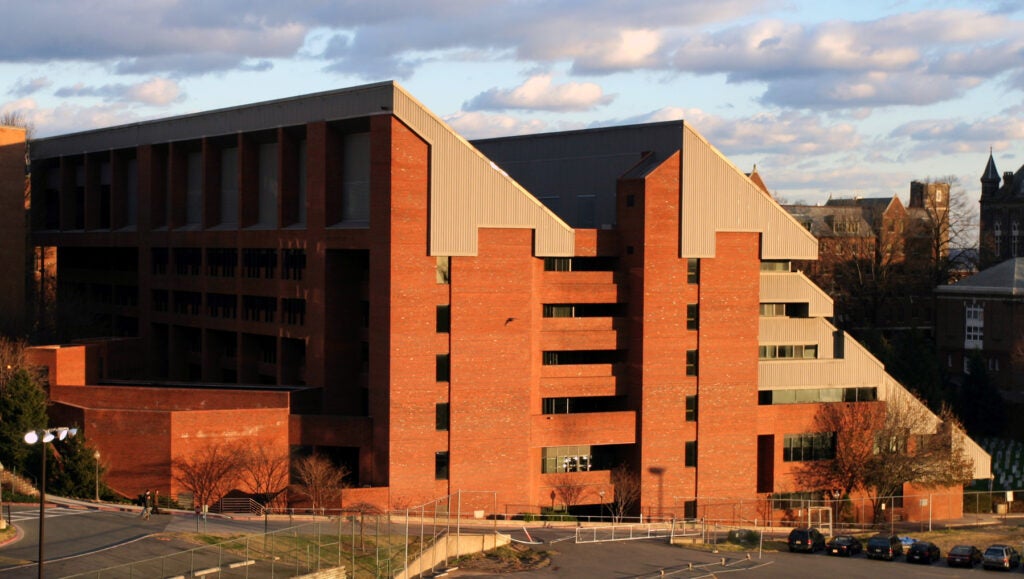Service Provided

High Voltage
The high voltage electricians operate and maintain the high voltage distribution network that supplies power to campus. We test, calibrate, and monitor the usage of meters and other recording devices. We maintain all system components, circuit breakers, cables, and other necessary pieces of equipment.
About High Voltage
We are responsible for getting the electricity from Pepco’s seven incoming lines to the switchboards found in each building. In addition, We coordinate with Pepco and other contractors to provide comprehensive support to the electrical system.

The high voltage electricians installed and maintained the Intercultural Center’s 300kW photovoltaic rooftop array in 1984, providing 27 years of solar power to the ICC for twenty-seven years before it was shut down in December 2011.
The solar panels now lie quietly on the roof of the ICC, a symbol of Georgetown’s commitment to sustainability and renewable power.
Central Heating and Cooling Plant
Our current operation involves distributing chilled water from chillers for air conditioning and steam from boilers for space heating, sterilization, and cooking.
About the Central Heating and Cooling Plant
The Central Plant workers are responsible for the operation and maintenance of the boilers and chillers, the steam/condensate lines and chilled water pipes that connect the campus to the Central Plant, the domestic water distribution loop that runs through campus, and the natural gas lines.
The Central Plant is manned around the clock by shift workers who respond to problems and handle and utility-related emergencies.
Central Heating and Cooling Plant Timeline
1970: Two high-pressure steam boilers and two steam turbine chillers were constructed and housed in the northwest quadrant.
1979: The University completed the southeast addition under a federal grant, adding the country’s first successful commercial fluidized bed-coal boiler.
1983: A high-speed turbine cogenerator driven by pressurized steam from the coal boiler is added to the southwest quadrant.
1986: Two electric motor chillers were installed in the southwest quadrant.
1997: The University converted the original cooling tower courtyard to interior plant space containing two additional electric motor chillers.
1998: The high-speed turbine cogenerator and the coal boiler that powered it were decommissioned and replaced by a third natural gas boiler.
2003: Construction began to install three more chillers, two as replacements for the original steam turbine units. This addition included new electrical and pumping systems.
2009: An eighth chiller was added, this one with a 3,750-ton load.
2015: Another 3,750-ton chiller was installed to match growing campus demand.
Commodities
The Department of Energy and Utilities provides utilities to Georgetown University. See below some general consumption, production, and cost numbers for Georgetown University and the Central Plant. In the following sections, you will find a more in-depth explanation of these commodities.
Steam
The Central Heating and Cooling Plant produces and distributes steam to university buildings for space heating, hot water production, cooking, sterilization, and humidification. The campus uses over 500,000 klbs (kilopounds) of steam. It takes around 14.7 therms of fuel, 3.75 kilowatt-hours of electricity, and 37 gallons of water for our boilers to produce one kilopound of steam. To lend some perspective, it takes around a tenth of a therm to run a standard burner on a gas range stove top for an hour.
The steam produced is driven through underground pipes, driven by approximately 100 pounds per square inch (psi) of pressure. After the steam has been consumed, the resultant liquid (condensate) is pumped back and recycled to produce more steam. The total heating capacity of the Central Plant is 400,000 pounds per hour (pph) of steam.
Chilled Water
The Central Heating and Cooling Plant produces and distributes chilled water to university buildings for cooling needs. The chilled water runs through an underground piping system to localized air handling units (AHUs) that use chilled water to produce cool air. The Central Plant produces over 50,000 kTh (kiloton hours) of chilled water a year. As examples, the Intercultural Center uses around 800 kTh a year, the Leavey Center around 2,000, and Village A around 500.
To produce one kiloton-hour of chilled water, our chillers consume around 750 kilowatt-hours and 2,000 gallons of water. Once the chilled water is pumped through the AHUs, it is returned to the Central Plant, where the chillers recool the water by dissipating the heat picked up in the buildings through cooling towers. This takes the form of rising water vapor from the towers at the Central Plant, a process visible from outside. The total cooling capacity of the Central Plant, with the addition of our latest chiller, is 23,500 tons (with an additional 1,000 tons available from our thermal storage tank).
Electricity
Pepco provides power to Georgetown through six 13.8 kV (kilovolt) main feeds originating from their local electrical substation. Primary distribution throughout campus consists of underground cables and outdoor switchgear rated at 13.8 kV. The campus uses an annual average of 150 million kWh (kilowatts by hours) of power. This electricity is used to power buildings and produce steam and chilled water. Healy, as an example, used 1.3 million kWh a year. About 45 million kWh a year is consumed in the production of chilled water and 1.8 million kWh for steam, with the rest being distributed directly to buildings for consumption.
Natural Gas
Natural gas is delivered to campus by DC’s local utility, Washington Gas. The campus uses an annual average of 750,000 MMBtu of fuel. About 96% of that goes to running the natural gas boilers in our Central Plant to produce steam. The rest is used around campus for miscellaneous natural gas needs in kitchens and scientific labs.
Domestic Water
The DC Water and Sewer Authority provides domestic water and sewer services to the campus loop through eight main water lines. The campus uses approximately 300 million gallons of domestic water annually. About thirty-five percent of this water is used in the production of chilled water and about ten percent in the production of steam. This rest of the water runs through the main loop to buildings for local use.
